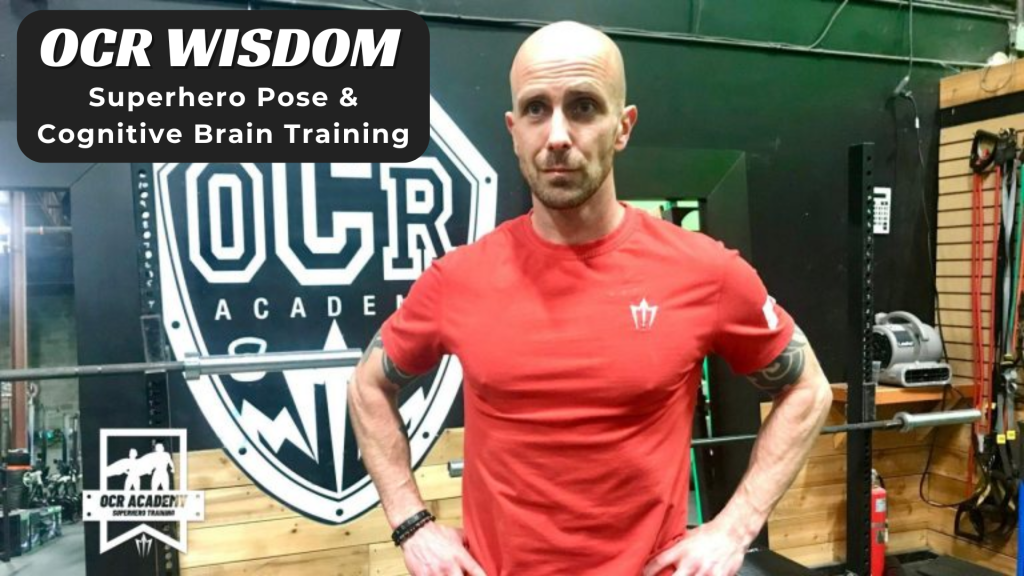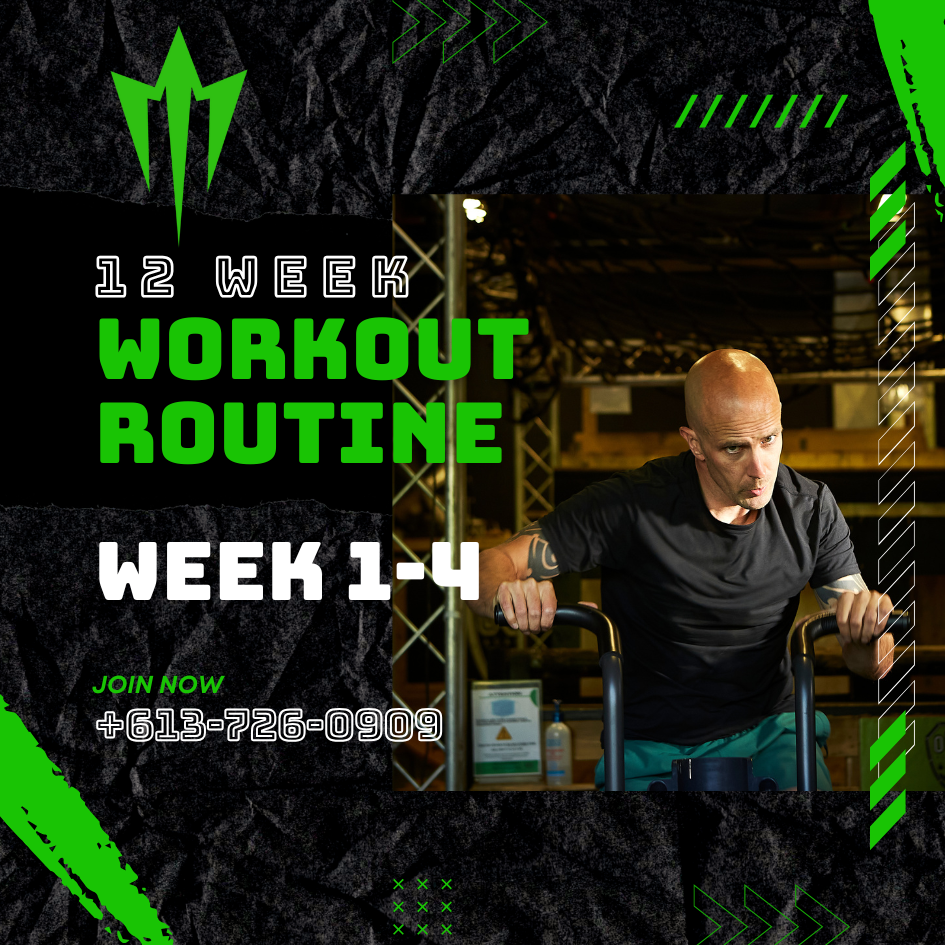At OCR Academy, we encourage our students to assume the Superhero Pose whenever we are starting an exercise. What is the Superhero Pose? Hands on your hips, shoulders upright, and back straight.
Montare Behavioral Health did a study that showed that 86% of the students who were in a slumped position (like a villain) found it easier to recall negative emotions/experiences. On the contrary, 87% of the students found it much easier to recall positive experiences when standing with their hands on their hips, shoulders upright, and back straight (like a superhero).
With this in mind, the same idea can be applied to everyday life. Try it at home: stand in a Superhero Pose and ask people around you what they think you are ready to do in this position. Chances are they will say “take action”. Now do a villain pose and ask what they think you want to do next? Probably something evil.
Using our physical stance is one thing. Now let’s spend some time understanding how Cognitive Brain Training (CBT) can be a valuable tool in optimizing your productivity.
Unlike more complex or traditional forms of talk therapy, Cognitive Brain Training simplifies the process of understanding and changing emotional processes.
According to CBT, there are just a few powerful components of emotion to understand and work with. The benefit of this simpler approach is that it clarifies problems and the solutions needed to solve them. With a little practice, anyone can understand how to do it.
From the CBT perspective, there are three components that make up our emotional experience. They are thoughts, feelings, and behaviors. Thoughts create feelings, feelings create behavior, behavior reinforces thoughts, and the cycle repeats.
How Thoughts Impact Feelings and Behaviors
Jerry has suffered from depression on and off throughout her life. She has noticed the depression begins to set in after some kind of a major setback in her career or social life, but has thus far been totally unable to reverse course when she begins to feel her mood worsen. She is currently experiencing significant depression that started after she was laid off from her job due to an economic downturn.
Jerry signed up for a fitness class at OCR Academy as she read that exercise has a significant benefit on our mental health. Hoping that getting physically active will help with not only her physical and mental health, but give her the confidence of going to the gym and taking on a new skill will have a direct result in her ability to attack other challenges, like job hunting.
The day of her first class, she was contemplating getting ready to go out, she had the thoughts: “This class will probably won’t result in anything. I won’t get fit after one class and I will most likely fail at everything, and when people find out I’m not in shape, they will judge me and consider me useless. It’s a huge amount of energy for a lousy payoff.” After considering these points, she felt heaviness and fatigue wash over her. She decided to lie down for a bit, but she only felt less energy after having laid down in bed for twenty minutes, so she decided not to attend the class. That night before bed, she had the thought, “I really wasted the day. I’m never going to get a job, and I’m never going to feel better.”
In this example, it’s pretty clear that Jerry’s thinking is leading to a negative chain reaction in her feelings and behavior. Having thoughts that she won’t succeed only results in her having stronger feelings of depression: heaviness and fatigue. These thoughts also provide a reason for her to engage in a certain behavior: avoiding the class. Finally, it’s clear how the feelings and behavior end up reinforcing her negative thoughts, thus continuing this negative feedback loop.
How Behaviors Impact Thoughts and Feelings
Danny has had panic attacks most of his life. When he has a panic attack, he has feelings of tightness in his chest, his heart pounds, and he gets lightheaded. Since beginning training at OCR Academy, his panic attacks have been on the rise especially before competitions.
He has learned to engage in the behavior of quickly returning home or hiding in the bathroom whenever the feelings of anxiety begin, but recently, this has resulted in him missing a significant portion of the fitness class, and he has fallen behind. Whenever he thinks about how behind he is, he feels an upsurge in panic symptoms, and the cycle ensues. Also, he has recently begun to worry that he will “lose control” and “go crazy” if he is unable to escape to someplace private when he experiences panic.
Here, it is Danny’s reactions to his feelings that are the major source of the problem. While panic attacks are definitely unpleasant, they won’t cause him to “go crazy” or “lose control,” but having these frightening thoughts certainly causes his anxiety and panic to rise. Because the main coping skill he has for his anxiety is escape and avoidance, his behaviors are only serving to bolster the thought that panic attacks are dangerous.
Paradoxically, this only causes more panic attacks. If he were to reverse the pattern of avoidance and actually ride out a panic attack in class, he might find that they are short-lived (usually lasting only a few seconds to a few minutes) and certainly do not cause him to go crazy or lose control. Moreover, it’s unlikely anyone else would notice it was even happening. However, because his behavioral routine does not allow for this evidence to see the light of day, he feels trapped in a cycle of panic and avoidance.
How Feelings Impact Thoughts and Behaviors
Jodi recently found out a close friend was diagnosed with a debilitating disease. Understandably, Jodi had feelings of sadness, a pit in her stomach, and fatigue when she heard the news. As she went through her day, she had more negative thoughts about her job than usual, such as “I’m wasting my life here” and “No one takes me seriously.” Feeling hopeless about her fitness journey, she engaged in the behaviors of not participating in the classes and giving up after some difficulty completing a movement pattern. After the class, when having dinner with her partner, Jodi had uncharacteristically bleak thoughts that “This relationship is not going to last” and that she would “be alone for the rest of her life.” Jodi was silent for much of the meal and felt awkward and lonely.
Sadness is a natural feeling to have when you get bad news about a loved one. In this example, the sadness Jodi felt about her friend seemed to bleed into her feelings about work and her romantic relationship, which were not at all related to her friend’s news. This is because her feelings of sadness essentially tinted her view on everything, not just her friend. Because she had strong feelings of sorrow, her thoughts, no matter where she turned them, were affected by that sorrow. Consequently, she withdrew from the classes at OPCR Academy and from connecting to her romantic partner. By disengaging from important parts of her life, she set the stage to feel even worse, ensuring that the cycle of negative emotion continued.
CONCLUSIONS
By recognizing the cascading feedback loop of thoughts, feelings, and behaviors influencing and escalating each other, you develop a powerful insight into harmful cycles of emotion. The goal of cognitive-behavioral therapy is to map out these networks in order to undo them. Just a few, consistent interruptions of these cycles of emotion can undo them altogether. The depression pattern is undone by adopting less negative ways of thinking and engaging in rewarding activities rather than avoiding them.
Cognitive brain training provides invaluable tools for mastering mood management and enhancing effectiveness during challenging situations. By honing the skill of discerning between thoughts, feelings, and behaviors, individuals can cultivate a heightened awareness of their internal processes. Through targeted exercises and practice, one can learn to identify the origins of their emotions and thoughts, disentangling them from their subsequent actions. This separation empowers individuals to respond more deliberately rather than react impulsively to adversity, leading to greater emotional regulation and resilience. By embracing this cognitive approach, individuals can navigate challenging events with clarity and purpose, ultimately fostering personal growth and well-being.
This all can start by simply standing like a superhero and asking yourself, “what’s next?”. You may not always feel like doing something. Your ego will pull from all sorts of life experiences that will validate your feelings, and sometimes this will result in you lying on the couch instead of taking action. What I can tell you from personal experience is that I always feel better after I exercise. I don’t always feel good before I start, so instead of asking myself how do I feel now, ask “how will I feel after I complete this task?”.



